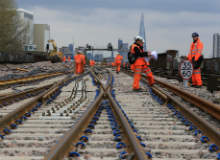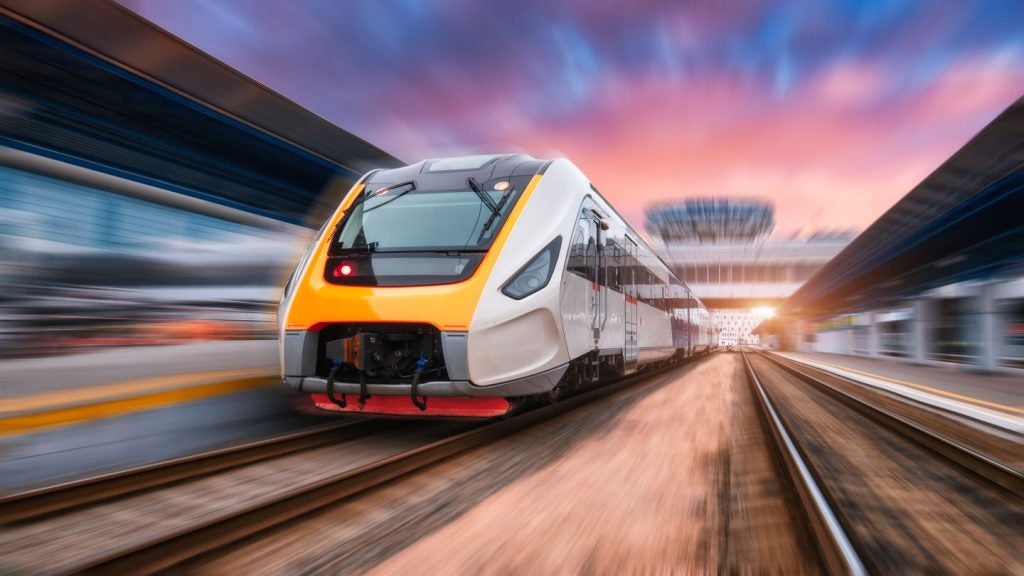
In April, The Boston Consulting Group (BCG) published its most recent findings on the relationship between public funding models and railway performance.
The report, “The 2015 European railway performance index: exploring the link between performance and public cost” probed deeper into the argument that railway infrastructure managers could benefit from receiving the lion’s share of government subsidies.
Throughout Europe, national railway systems use public subsidies to maintain their infrastructure and improve their passenger and freight operations. Different patterns of investment persist, however: while some countries prioritise either infrastructure managers or train operators in their funding, others choose to divide funds equally between the two.
These choices served as the base of BCG’s study, which found that countries that prioritise infrastructure mangers seem to fare batter in their railways’ overall efficiency, safety and passenger satisfaction.
“Simply put, countries that get the most value from public spending on railway systems also allocate the highest percentage of subsidies to infrastructure managers,” said Sylvain Duranton, a BCG senior partner and a co-author of the report in a press release.
Extensive exemptions allowed to member states provide an all too easy set of loopholes.
How well do you really know your competitors?
Access the most comprehensive Company Profiles on the market, powered by GlobalData. Save hours of research. Gain competitive edge.

Thank you!
Your download email will arrive shortly
Not ready to buy yet? Download a free sample
We are confident about the unique quality of our Company Profiles. However, we want you to make the most beneficial decision for your business, so we offer a free sample that you can download by submitting the below form
By GlobalDataThe authors highlight that the findings are not entirely foolproof and should be taken with caution: “This correlation does not mean that more effective subsidy allocation is a magic bullet for improving railway performance,” said Agnès Audier, who also co-authored the report. “However, it suggests that national governments and railway companies can gain valuable insights into what drives railway performance by taking a fresh look at their country’s model for allocating public subsidies.”
While the outcomes were mostly consistent with BCG’s previous 2012 assessment, this year’s results are based on a “holistic approach” to railway efficiency, which explores intensity of use, quality of service, and safety. Based on the Railway Performance Index (RPI) approach, European countries were ranked in three categories, or tiers, from the best to worst performing railway systems.
A look at one country from each tier reveals drastically different funding and management models, which BCG suggests is a step towards better understanding what drives a smooth-running railway system.
Switzerland stays ahead in railway performance
In keeping with 2012 results, Switzerland topped the Tier I category, maintaining the overall best performing railway network in Europe, ahead of Sweden, Denmark, France, Finland, and Germany, who shared the same category.
According to the report, Switzerland “has an excellent rating for intensity of use, notably driven by passenger traffic”. It also scored “very good” in terms of safety and “good” in its quality of service.
The country’s national rail company is Swiss Federal Railways (SBB), comprised of three divisions and two groups, each covering passenger and freight traffic, infrastructure, real estate and core services such as finances and personnel.
In Switzerland, public transport finances 50.5% of its own operations, with the rest stemming from public subsidies and government investment in infrastructure.
A funding model from 2013 shows that SBB’s infrastructure, operations and maintenance of existing network are financed through a service provision agreement with the federal government, but extra revenue also comes from regional, international and freight traffic, as well as SBB-owned property.
Every four years, the service provision agreement with the government is renewed to define infrastructure targets and annual federal contribution. In 2013, out of a total of $2.9bn invested in infrastructure and operations, the federal budget contributed $1.6bn.
A separate “special fund” is dedicated to financing any major new-build projects that don’t fit into the framework of the agreement. The special fund is comprised of a national fund set up for financing public transport, other infrastructure funds worth $3bn over 20 years, and yearly contributions by the 26 cantons (or regions) of Switzerland. According to information published by SBB, the national public transport fund is contributing more than $32bn over 20 years, while the cantons offer a contribution of over $312m per year.
The Swiss government announced that from 1 January 2016, a new Rail Infrastructure Fund will be set up, which will fully finance the Swiss rail infrastructure, including operation, maintenance and construction and will be managed by the country’s Accounts and Controlling Department.
UK drops in overall ratings, but maintains safest railway in Europe
In BCG’s report, the UK was included in the Tier II performance category, scoring the highest safety rating but only average intensity of use, due to a low level of freight utilisation. The country’s drop from seventh to eight place since 2012 can be attributed mainly to the poor quality of service highlighted in the report.
In Britain, the management of rail infrastructure is split between Network Rail, the monopoly owner and operator of the national rail
According to the Office for Rail and Road (ORR), “funding for Network Rail and the train and freight operating companies comes from a combination of passenger fares, government subsidy and commercial operations”.
Figures from 2013-14 show the extent of the government’s backing, with £3.8bn ($5.9bn) invested in the rail industry over the year.
The funding went almost exclusively to Network Rail in the form of a £3.7bn Network Grant, compared to £4bn the previous year.
As free-trade agreement (FTA) negotiations go, the ones between the European Union and Japan are going quite smoothly.
Income from other sources, such as payments by TOCs, property, stations, retail and freight meant that Network Rail received a total of £6.2bn within that financial year. Network Rail uses this money to run, maintain and develop the core physical infrastructure and ensure efficient management of the assets over the short, medium and long term.
Going as far back as 2011-12, documents provide no detailed account of how funds were divided between train operators and Network Rail, but overall government funding reduced over time, from £4bn in 2012-13, to 4.2% les compared to 2011-12 and up to 9.1% less than 2010-11.
Last year, direct rail support, which is the grant payment to Network Rail, represented the lowest grant payment since 2005- 06, ORR points out.
National rail passenger satisfaction dipped by 2% between 2010 and 2014, from 83% to 81% according to surveys by Transport Focus.
However, the industry did make significant improvements on safety and security, with a July report by ORR nominating the UK rail network as “the safest in Europe”, in accordance with BCG’s findings.
Poland’s safety ratings drag network into third category
Poland’s scoring within the Tier III rating was primarily down to its poor safety ratings, the main reason for under-performance across most countries in the third category. Compared to the 2012 study, the country dropped two chart positions, from 21 to 23.
Poland’s national rail operator, formerly known as Polskie Koleje Panstwowe (PKP), was split to form a conglomerate in 2001, which became known as the current PKP Group. PKP, or the Polish State Railways, is the dominant rail operator and also the parent company. The group also contains PKP Intercity and Cargo, overseeing passenger and freight operations respectively, as well as PKP PLK, which represents the country’s railway infrastructure manager.
A 2013 financial report of the Polish State Railways stipulates that “the financing of the PKP Group companies’ operations is significantly reliant on public funds obtained from various sources”.
This is done under a framework agreement for railway infrastructure budgeting (RUBIK) signed by the railway infrastructure manager and the Minister for Transport, in order to establish a “proper level of financing from public funds” within the rail industry.
The 2013 annual report from PKP PLK shows an increase in public funding, from 34% to 35% between 2012 and 2013. The report mentions that the public funds received by the company constituted 106% of the proceeds 2012. They were spent on maintenance and refurbishment tasks that were necessary to improve railway traffic safety and increase the speed of passenger trains.
But in April 2013, Poland’s independent state audit body NIK highlighted that “not enough efficient investments is the main reason why the condition of rail infrastructure in Poland is so poor”.
A news release on NIK’s website mentions that despite the fact that number of initiatives aimed at modernising the rail infrastructure had gone up, “half of the audited investments conducted by PKP PLK are delayed, sometimes by as long as 29 months against the original deadlines”. The delays were blamed on faulty coordination between PLK units and pre-design, design and documentation”. NIK cautioned at the time that if the national contribution was not provided in full, there was a risk that the projects specified in the company’s long-term investment programme would not be implemented.
While the level of funding granted to each rail subsidiary company varies year-on-year, the PKP 2013 report summarises its findings by highlighting that “the operation of the PKP Group companies depends to a great extent on the macroeconomic situation in Poland, reflected by economic indices such as GDP, inflation, price level and volatility of services available on the market”.
The importance of sustained investment
Despite using the most advanced methods of calculating the role public funds play in a network’s long-term performance, the report did not find a direct cause-and-effect connection between the two.
The authors concluded that “other factors, such as a system’s historically high performance and a country’s consistently high investments in the system over time, play strong roles in determining the extent to which public spending on railway systems generates value for a country,” adding that “the correlation does suggest, however, that regulators, governments, and railway companies should jointly consider the options for increasing public support of infrastructure managers”.





